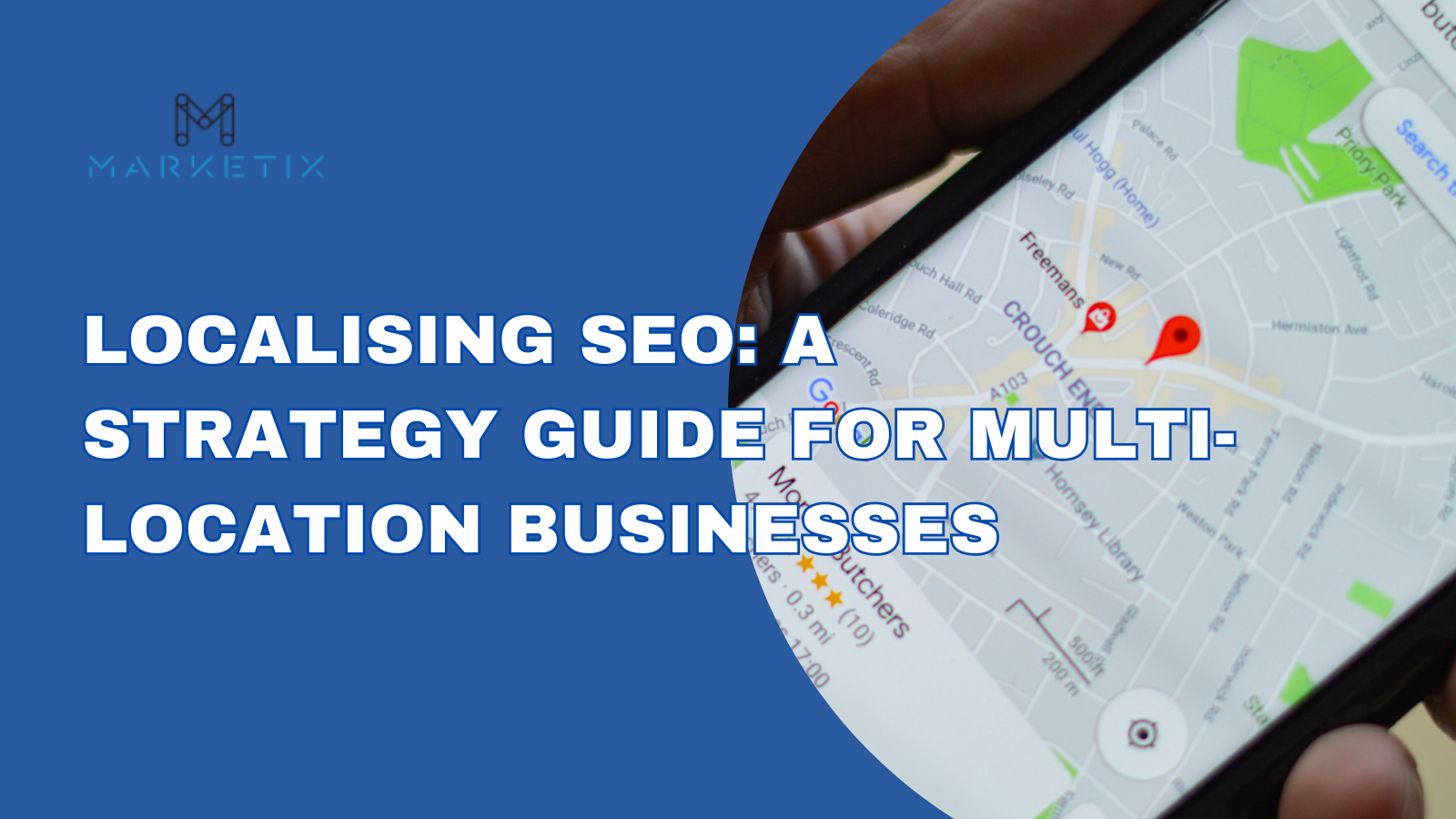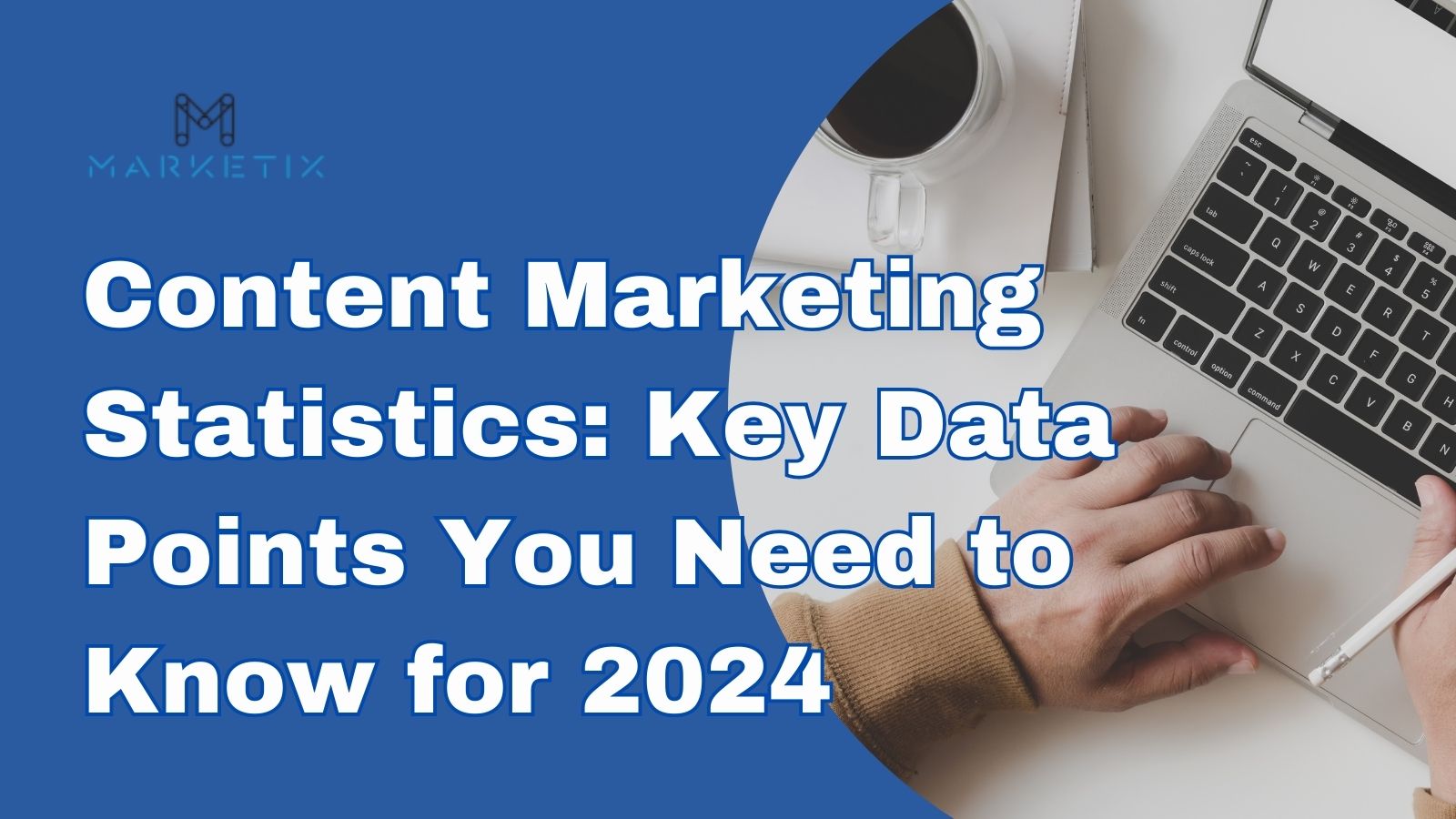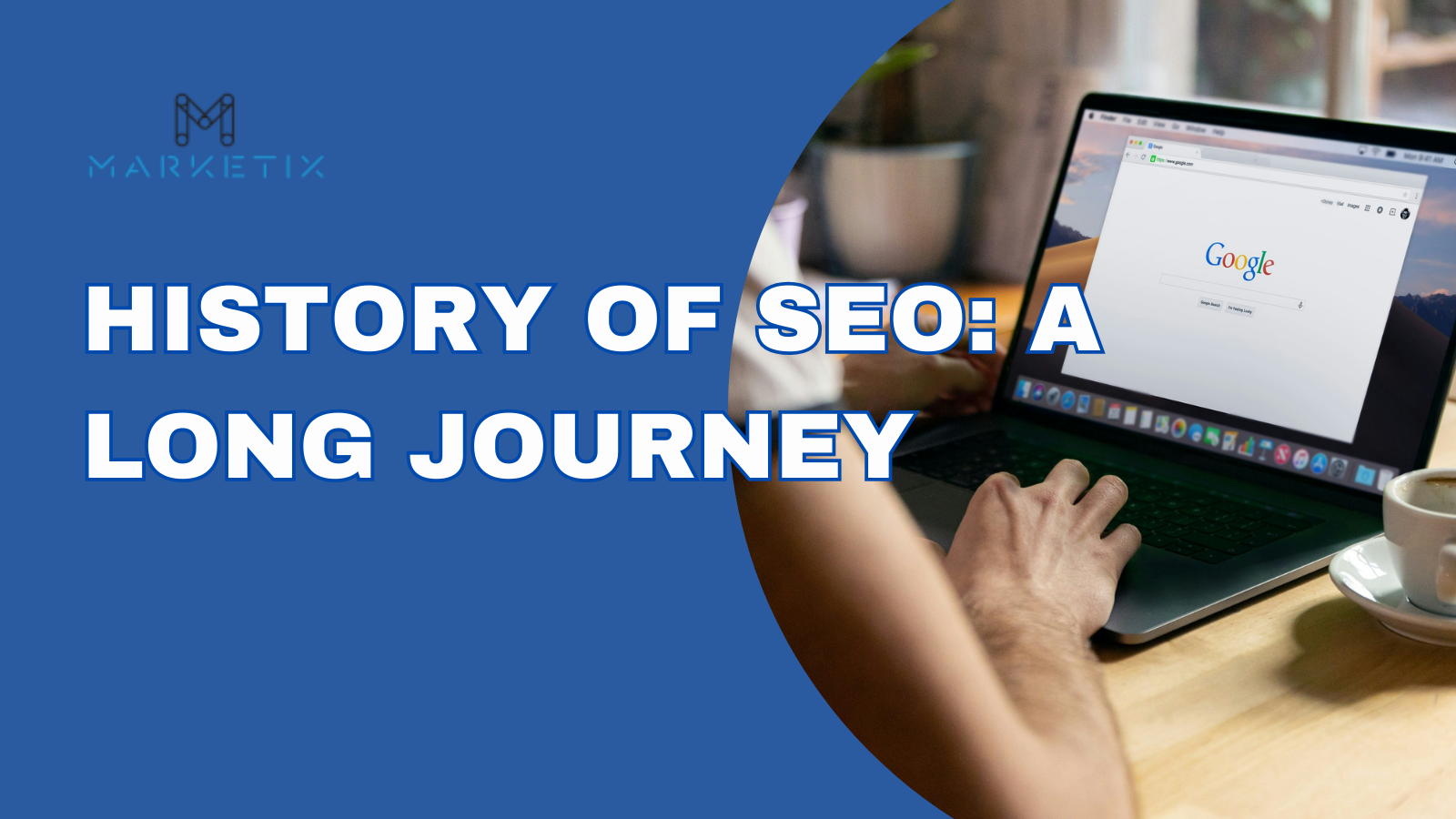- Home
- > The Marketix Blog
- > SEO
Advanced SEO Strategies for SaaS Companies
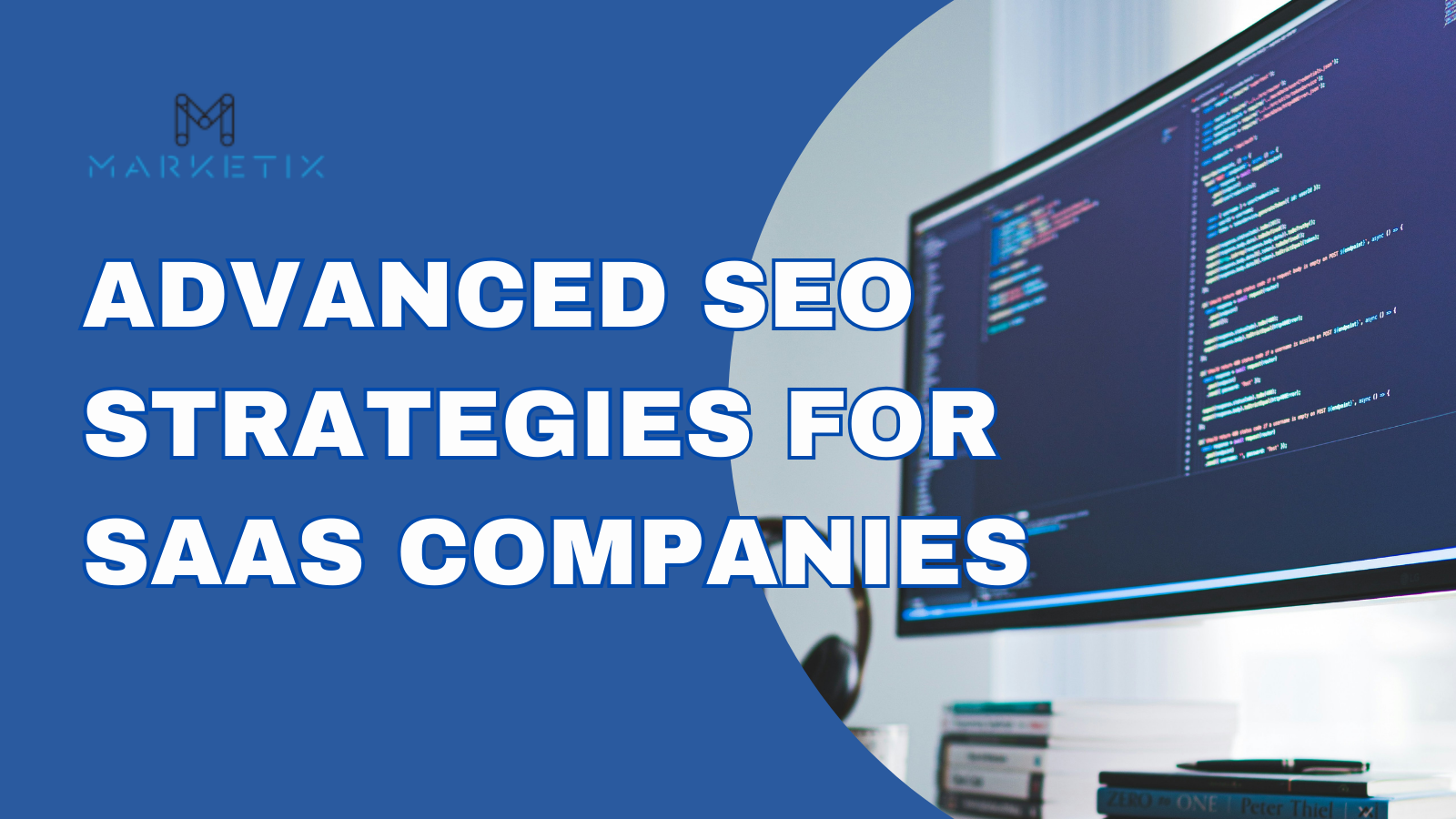
Standing out in the crowded SaaS market is no small feat and organic is a big growth driver for SaaS companies.
The right SEO tactics can draw in your ideal audience, boost your search engine rankings, and drive revenue for your SaaS company.
Let's explore how you can use advanced SEO strategies for SaaS companies to get growth for your SaaS business.
Audience Targeting for Top-of-Funnel Success
The top of the funnel (TOFU) is where you grab attention and draw potential customers to your website. To succeed here, you need to focus on the right keywords.
Not all high-traffic keywords are valuable. Some attract traffic but have high churn rates, meaning visitors leave quickly without converting.
Instead, incorporate relevant long-tail keywords. These may attract fewer visitors, but they bring in users with high commercial intent. It's better to have ten serious buyers than a hundred window shoppers. Use high-traffic keywords to get noticed and long-tail keywords to attract serious prospects.
Example:
If you offer project management software, a high-traffic keyword like "project management" may bring in a lot of visitors, but many might be looking for general information rather than a specific solution.
In contrast, a long-tail keyword such as "best project management software for consulting companies" targets users who are actively seeking a specific solution like yours, demonstrating a higher rate of intent, resulting in higher conversion rates.
User Intent Optimisation
Now, let’s get into user intent optimisation.

Your content should cater to all stages of the marketing funnel: awareness (TOFU), consideration (MOFU), and decision (BOFU).
Awareness Stage (TOFU)
In the awareness stage, the key is subtlety. You’re not selling a product here; you’re selling an idea or highlighting a problem. Your content should be educational and eye-opening, subtly introducing prospects to concepts and challenges they may not have considered.
Examples:
- Blog Posts: "The Hidden Costs of Outdated Software: Is Your Business At Risk?"
- How-to Guides: "Why Cybersecurity Should Be on Every CEO's Radar"
- Infographics: "5 Signs Your Supply Chain Needs an Overhaul"
Consideration Stage (MOFU)
In the consideration stage, potential customers are actively seeking solutions to the problems you've highlighted. This is your chance to position yourself as the go-to solution by offering real, tangible value through in-depth insights, comparisons, or case studies.
Examples:
- Comparisons: "How XYZ Platform Streamlines Your Supply Chain: A Comparative Analysis"
- Case Studies: "10 Questions to Ask Before Choosing a Cybersecurity Provider"
- Detailed Insights: "Case Study: How Company X Reduced Software Costs by 40% with Our Solution"
Decision Stage (BOFU)
At the decision stage, the potential customer is almost convinced but needs that final push. Provide content that makes it easier for them to say 'yes.' Product demos, testimonials, and ROI calculators are excellent tools here. Address any lingering doubts they may have and show them the value of their investment.
Examples:
- Free Trials: "What Our Customers Are Saying: Top 5 Testimonials of the Month"
- Demos: "Maximising Your ROI with Our Software: A Step-by-Step Guide"
- Testimonials: "A Walkthrough of Our Platform's Top Features"
Adapting your content to these stages will make sure you meet your audience's needs effectively, guiding them smoothly through the buying process.
Topic Clusters and Pillar Pages
Topic clusters and pillar pages are important for organising your content effectively. Pillar pages cover core themes in-depth, while cluster content includes subtopics that support and expand on these themes.
For example, a pillar page on "SaaS Marketing Strategies" could link to cluster content on "Email Marketing for SaaS," "Social Media Strategies for SaaS," "Content Marketing for SaaS," "SEO for SaaS Companies," "PPC Advertising for SaaS," and "Lead Generation for SaaS."
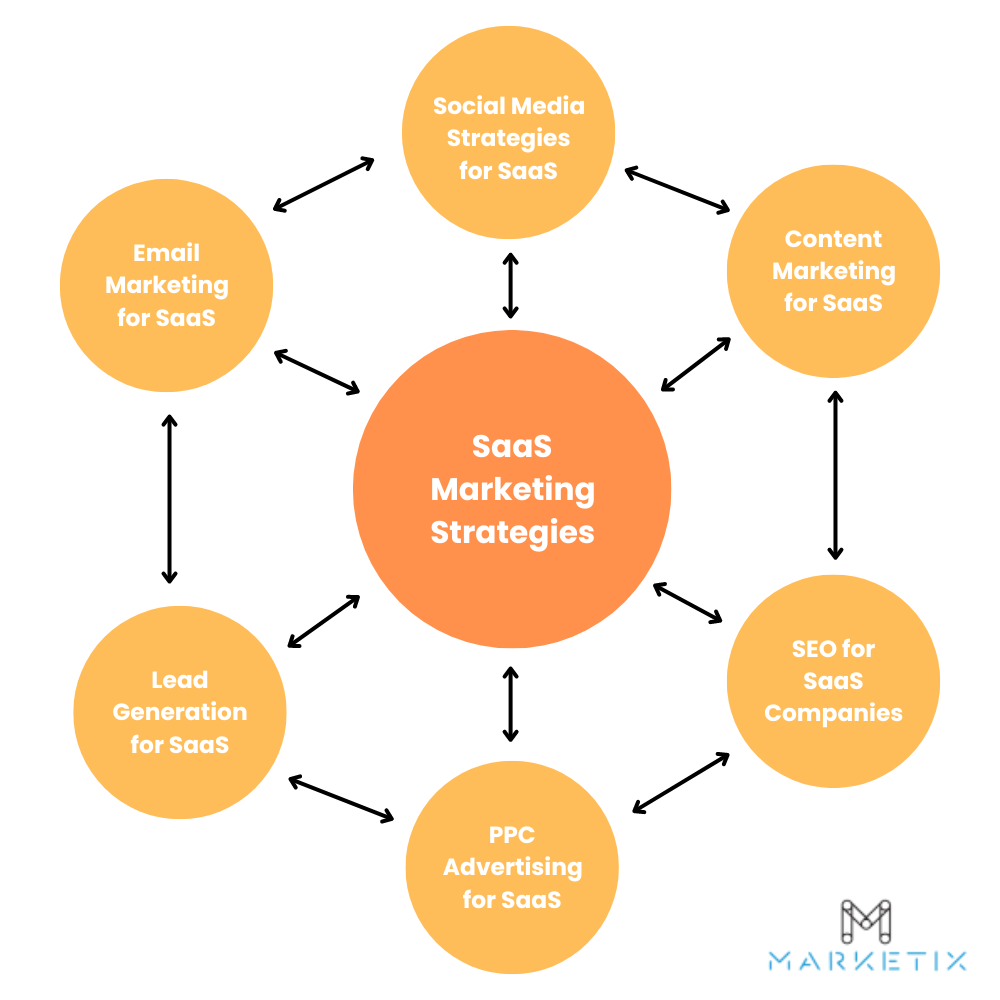
This structure improves user navigation and also signals to search engines that your site is an authority on these topics. Additionally, it offers excellent opportunities for internal linking. Each piece of cluster content links back to the pillar page and related articles, creating a comprehensive network that enhances your SEO.
Leveraging SaaS Integrations
Leveraging SaaS integrations is a powerful strategy to drive traffic and attract users. Users often seek solutions that integrate seamlessly with their existing tools.
For instance, if your SaaS integrates with Salesforce or Slack, write detailed guides, how-to articles, and case studies showing how these integrations make life easier.
Example:
Suppose your SaaS platform integrates with Salesforce. A specific use case could be automating customer data synchronisation.
Many businesses struggle with keeping their customer data up-to-date across various platforms. This integration can solve the business problem of data inconsistency and the manual effort required to update records.
Detailed Guide: Create a guide titled "Automating Customer Data Synchronisation with [Your SaaS] and Salesforce." Explain how the integration ensures that customer information is automatically updated in real-time across both platforms, eliminating the need for manual data entry and reducing errors.
How-to Article: Write an article such as "Streamlining Sales and Marketing with [Your SaaS] and Salesforce Integration." Describe how sales teams can benefit from having the latest customer data at their fingertips, allowing for more accurate forecasting and personalised marketing campaigns.
Case Study: Develop a case study titled "How Company X Improved Data Accuracy and Efficiency with [Your SaaS] and Salesforce Integration." Highlight a real-world example of a company that successfully implemented the integration, detailing the challenges they faced, the solution provided by your SaaS, and the positive outcomes, such as increased efficiency and reduced operational costs.
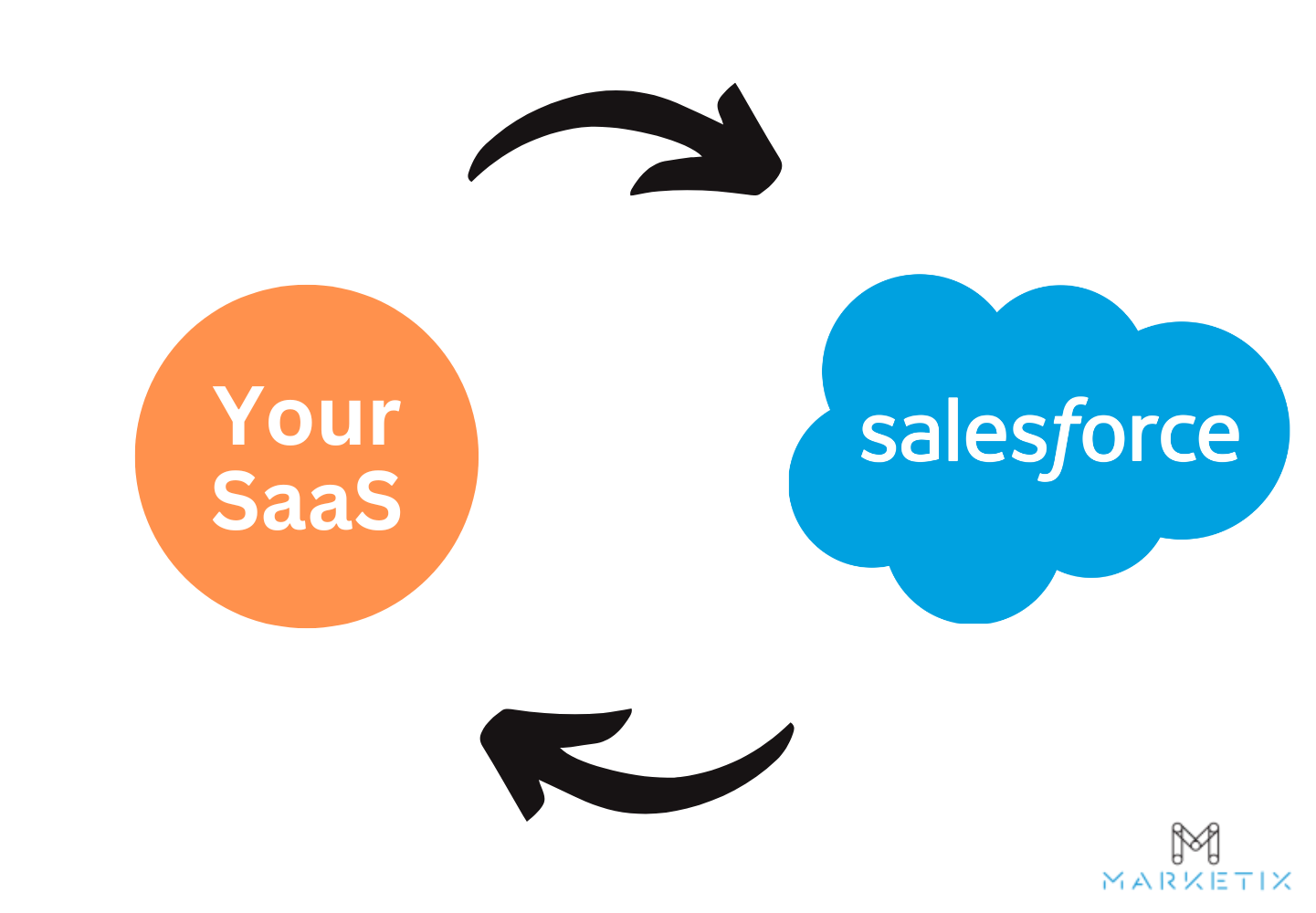
You’re highlighting your product’s versatility and you’re also tapping into the user base of these well-known tools.
By doing this, you’re answering specific user queries and attracting visitors who are already halfway down the conversion funnel. They’re looking for something that works with tools they love – and here you are, providing the perfect solution.
Customer Reviews and Testimonials
Customer reviews and testimonials – they’re powerful trust builders and can seriously boost your conversions & search rankings.
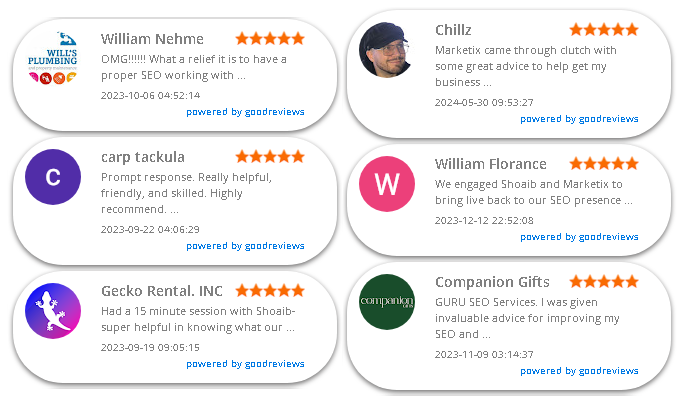
Encourage your happy customers to leave reviews on your website. People love to hear what other users think before making a decision. Plus, these reviews can be enhanced with a rating schema. This structured data helps search engines understand and display ratings in search results, making your listings stand out.
Including rating schema in your reviews can significantly increase your click-through rate (CTR). When potential customers see those star ratings in search results, it grabs their attention and builds instant trust.
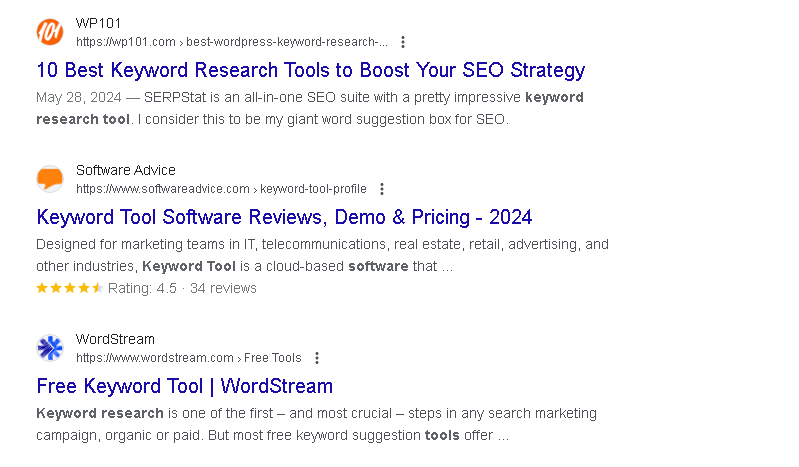
Customers often prefer sticking to one platform, so they’ll read about other users’ experiences with your software. This helps in building trust and improves your site’s SEO by increasing dwell time and reducing bounce rates. It’s a win-win.
Develop Case Studies
Now, let’s dive into case studies. They’re another secret weapon for user retention and engagement.
Case studies highlight successful implementations of your SaaS product, showcasing its value and effectiveness in real-world scenarios.

You’re giving potential customers a glimpse of what’s possible with your product. Share stories of how your software helped a client save time, reduce costs, or streamline their processes. Additionally, incorporate internal linking opportunities within your case studies to guide readers to related content on your site.
For instance, when discussing how a client streamlined their processes using your software, link to detailed guides or blog posts on specific features used. This enhances user experience and improves your site's SEO through internal linking.
The big opportunity here is to include descriptive anchor texts to your target commercial pages, to help them rank for the given keyword. For example, it could be for “CRM for consulting companies” and link out to your CRM landing page for consulting-type companies.
When users spend more time exploring your case studies, it boosts your engagement rate – a metric that does impact SEO. The longer they stay, the more signals search engines receive that your site is valuable and relevant. By strategically incorporating internal links, you keep readers engaged while guiding them to also discover more about your offerings.
Competitor Analysis
Another effective strategy is by doing competitor analysis. Knowing what your competitors are up to can give you a serious edge in SEO.
You can identify gaps and opportunities that you can capitalise on, helping you to outshine them in search rankings and attract more traffic to your site.
Start by identifying your main competitors – those who are consistently performing well in search rankings for the keywords you’re targeting.
Tools like Ahrefs and SEMrush are invaluable for this. They allow you to analyse your competitors' keywords, backlinks, and top-performing content.
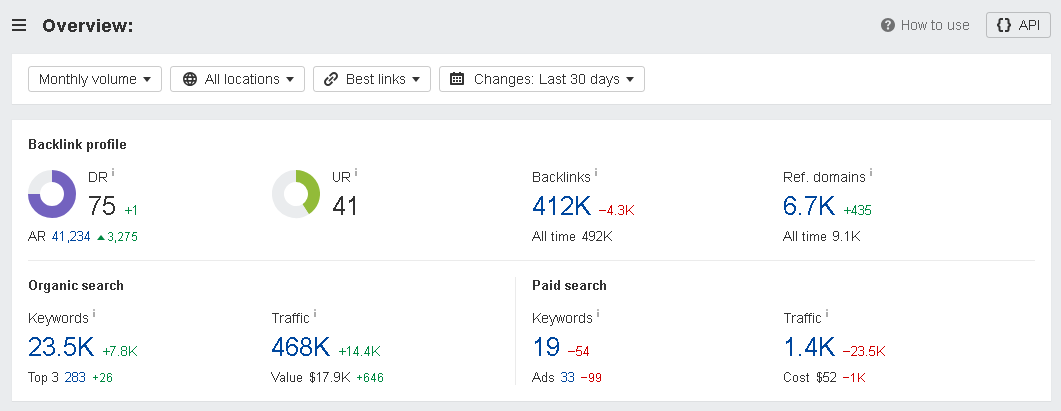
Pay close attention to the keywords they’re ranking for and the ones they’re bidding on if they’re running paid campaigns. This can give you insight into what’s working for them and where you might find opportunities to step in with something better.
Look for content gaps where you can offer more value or a different perspective. Maybe your competitor has an outdated blog post that’s still ranking well and you can do a better job of it with your team, or perhaps there’s a question they haven’t fully answered or explained the problem of.
Additionally, examine their backlink profile to identify potential link-building opportunities. If they’re getting backlinks from certain sites, consider reaching out to those sites with your own high-quality content.
Schema Markup Implementation
Schema markup might sound a bit techy but think of it as giving search engines a helping hand to understand your content better.
For SaaS companies, there are a few types of schema that can really boost your SEO performance. Product schema, for example, can highlight your software’s features, pricing, and reviews. As I said above, a review schema can display user ratings and reviews, adding credibility and attracting more clicks.
FAQ schema is great for addressing common questions and can help your content stand out with those nifty dropdown answers right on the search page.

Adding schema markup to your site can increase your click-through rates, as users are more likely to click on results that give them a quick peek at what they’re looking for. It’s a small tweak with a big payoff in terms of visibility and engagement.
Incorporate Press Coverage in Your Promotion and Backlink-Building Strategy
Last but not least, let's talk about the value of a good press release and more importantly, press coverage. It’s not just for big corporate announcements – it’s a fantastic tool for promoting new features, integrations, or achievements of your SaaS product.

Press coverage is a goldmine for building high-quality backlinks. When you announce something newsworthy, it gets picked up by various news outlets and blogs, which in turn link back to your site. This boosts your domain authority and visibility by what Google will typically perceive to be a high-authority website.
Make sure your press releases are well-crafted and include all the juicy details that make your news stand out. Distribute them through reputable PR channels and directly to journalists to get the maximum reach.
Basically, you’re spreading the word about your latest updates, strengthening your backlink profile, and improving your brand’s equity in Google’s link graph algorithm.
Expert SaaS SEO Agency
If all of this sounds like a lot to handle, don't worry – you don't have to go it alone.
As a leading SEO agency, we at Marketix Digital specialise in helping SaaS companies like yours climb the ranks and achieve remarkable growth.
Our team of SEO experts has the experience and tools to implement these advanced strategies effectively, making sure that your SaaS product gets the visibility and engagement it deserves.
Recent Posts
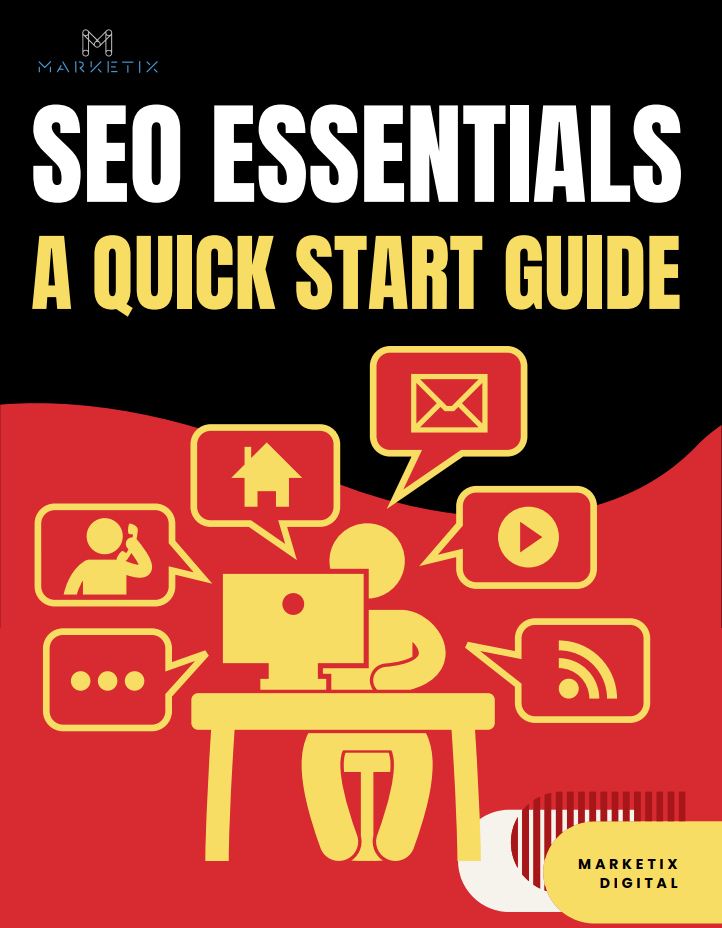
Free Download SEO Book
Download our 24-page SEO book to learn:
- How SEO Really Works
- How to Rank #1
- Content & SEO
- Choosing an SEO Agency
Thank you!
You have successfully joined our subscriber list.
Recent Posts


